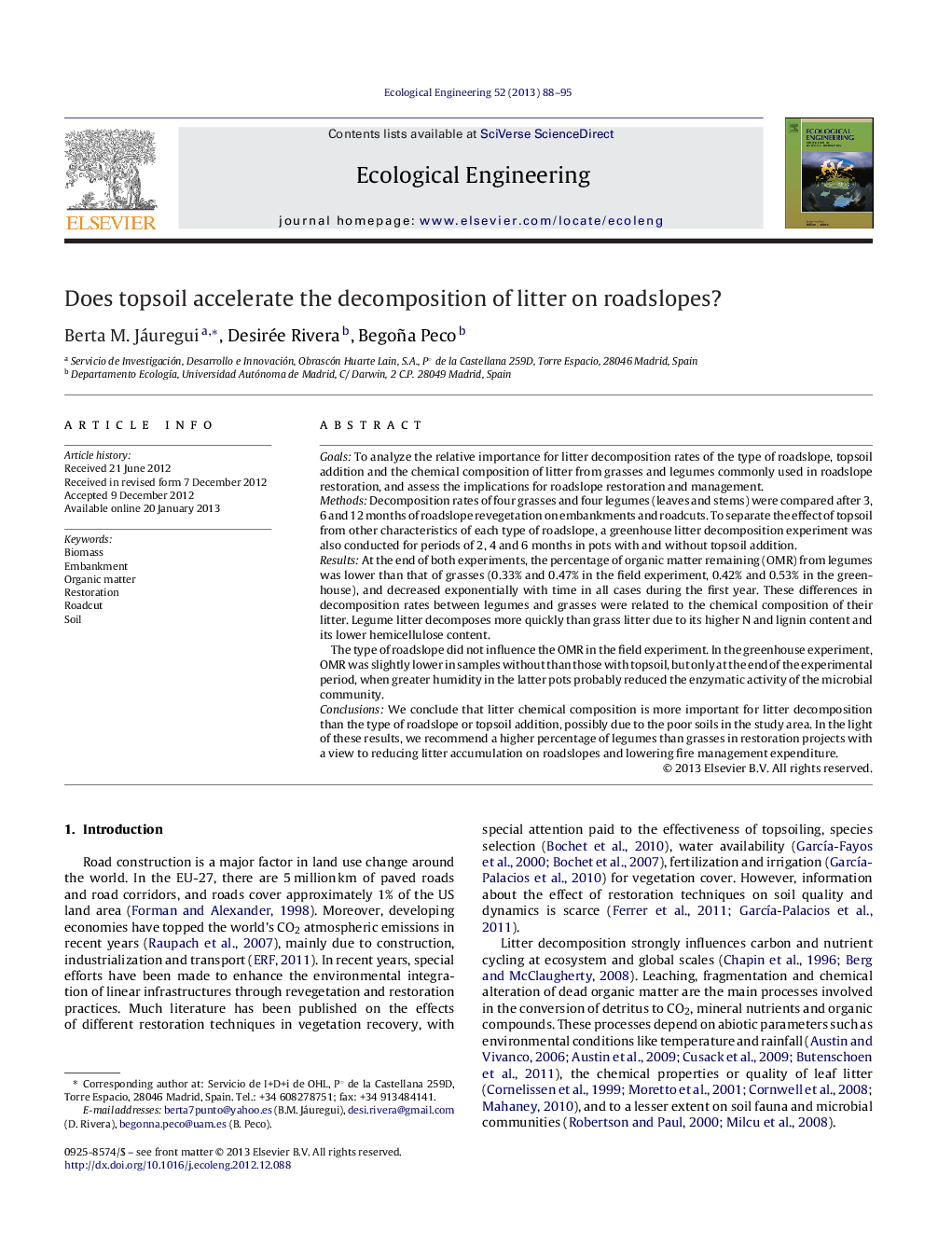| Article ID | Journal | Published Year | Pages | File Type |
|---|---|---|---|---|
| 4389740 | Ecological Engineering | 2013 | 8 Pages |
GoalsTo analyze the relative importance for litter decomposition rates of the type of roadslope, topsoil addition and the chemical composition of litter from grasses and legumes commonly used in roadslope restoration, and assess the implications for roadslope restoration and management.MethodsDecomposition rates of four grasses and four legumes (leaves and stems) were compared after 3, 6 and 12 months of roadslope revegetation on embankments and roadcuts. To separate the effect of topsoil from other characteristics of each type of roadslope, a greenhouse litter decomposition experiment was also conducted for periods of 2, 4 and 6 months in pots with and without topsoil addition.ResultsAt the end of both experiments, the percentage of organic matter remaining (OMR) from legumes was lower than that of grasses (0.33% and 0.47% in the field experiment, 0.42% and 0.53% in the greenhouse), and decreased exponentially with time in all cases during the first year. These differences in decomposition rates between legumes and grasses were related to the chemical composition of their litter. Legume litter decomposes more quickly than grass litter due to its higher N and lignin content and its lower hemicellulose content.The type of roadslope did not influence the OMR in the field experiment. In the greenhouse experiment, OMR was slightly lower in samples without than those with topsoil, but only at the end of the experimental period, when greater humidity in the latter pots probably reduced the enzymatic activity of the microbial community.ConclusionsWe conclude that litter chemical composition is more important for litter decomposition than the type of roadslope or topsoil addition, possibly due to the poor soils in the study area. In the light of these results, we recommend a higher percentage of legumes than grasses in restoration projects with a view to reducing litter accumulation on roadslopes and lowering fire management expenditure.
► Litter decay rate is not affected by either roadslope type or topsoil spreading. ► Roadslopes with topsoil accumulate more biomass. ► Litter chemical composition is the major determinant of its decomposition. ► Legumes decompose faster than grasses. ► More legumes should be included in hydroseeding species mixture.
